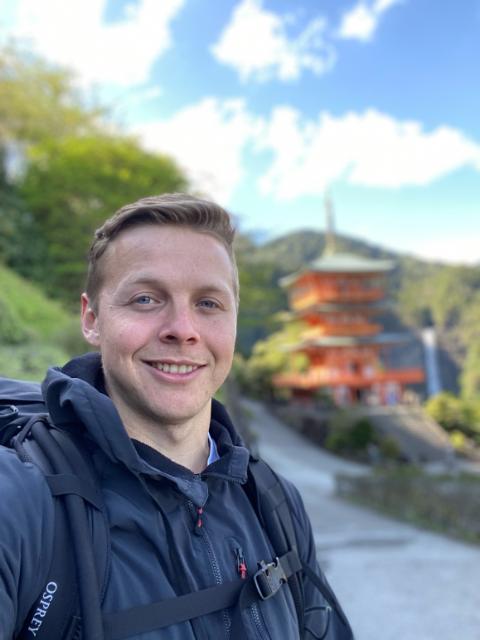The Conscious Collective Blog
The Conscious Collective Blog

Accepting What Arises: How to Process Your Emotions
“When we let go of all expectations of gain, and all desires for how things “should be,” we can enjoy how they truly are.”
As we quiet our minds still our bodies, and begin to listen and observe within, many things will present themselves to us. The superficial chatter of the mind clears, allowing for deeper, underlying emotions to arise. It is important that we know how to process these emotions when they arise, that we be willing to acknowledge them and feel them, rather than suppress them or try to escape them.
As we sit and practice meditation, we will begin to grow more aware of our thoughts, the way that we talk to ourselves, how we narrate our experiences, how restless our minds can be, how our body feels, what things we are holding onto, what fears and anxieties we carry, and what emotions exist within us.
Many of us are not very in touch with our emotions. We haven’t really been taught how to just feel our feelings. When we sit with ourselves and quiet our minds, these deeper feelings within us may arise and call for us to give them our attention. For many, this is met with some anxiety, as people often do not feel they know what to do with these feelings when they arise.
The truth is, however, there is nothing you have to do with them. It is because we are always doing that we are often not aware of how we are feeling in the first place. When we slow down, and move from doing to being, we can actually just be with our emotions, and this is the key to processing them.
Allow Yourself to Feel Your Emotions
We don’t need to do anything about our feelings, we don’t need to control them, act on them, or try to change them. We just need to acknowledge them, accept them, and allow them to be. We need to allow ourselves to feel.
When we create the space in us for feelings to be allowed, and can witness and observe these feelings, we give them the space to also be transformed. A feeling usually stays around because we aren’t acknowledging it, because we are suppressing it or pushing it down instead of acknowledging it and allowing ourselves to feel it.
It is important that from the very beginning we accept that we do have feelings, and then that we be willing to accept the feelings themselves. Acceptance is the key to processing our emotions.
Acceptance & Resistance
Life is always changing, and we can either accept this change or resist this change. When we resist change, resist our feelings, or resist anything, we are denying reality, we are trying to experience something other than the experience that we are having, and this only creates misery.
When we accept reality, on the other hand, we release that inner resistance to our experience, and allow our experience to flow and change in whatever way it will. This is the way to experience peace—to no longer resist life or try to control it, but to appreciate life and let life be.
Peace & Happiness
Peace is different than happiness. While these words have different definitions, and their meanings are really subjective, happiness is often dependent on external factors, whereas peace comes from within.
Happiness too, comes from within, as really all our emotions do, but happiness, as it is usually defined, is more related to our desires and needs being met. We are happy when we are having a good day, or when we like the work we do, are sharing time with our loved ones, or doing the things we enjoy. Peace is not dependent on things going our way, but rather it is that energy within us that allows us to accept life in whatever way it is unfolding.
We may not like our job, we be having a bad day, we may not like that things happen the way they do, but we can be at peace with these things. We can accept them. This does not mean we cannot change our circumstances or seek to fulfil our desires, it just means we accept the situation first, and then act, or don’t act, rather than denying the situation and fighting against it.
Peace allows us to embrace life, to embrace ourselves, no matter the conditions—even if we are not necessarily happy with what we are experiencing. Peace is to deeply accept reality as it is, to be okay with reality as it is. We can feel our deepest emotions—of fear, of sadness, of anxiety, of grief, of joy, of happiness, of love—and we can be at peace with them all, meaning we do not resist any of them but allow them and embrace them.
The way to be at peace is to accept what is, to not deny our experience, but to honor and make space for what we are feeling. Some people may wonder, “well, how do I accept life?” In a subtle way, this very question is a form of resistance. It’s a way to say, “well since I don’t know how to accept life, or accept my emotions, I’ll just continue denying or resisting them.” The only how is to stop resisting, to stop trying to change the experience, to be willing to just allow it, observe it, and be with it.
Most of Our Suffering Comes From Resisting the Present Moment
The interesting thing is, most of us will find that nearly all of our pain and discomfort comes from resisting our experience, rather than accepting it. When we try to escape life, we create unhappiness. When we try to change our experience, it means we aren’t content with things as they are. It is not the circumstances that are the cause of the discomfort, but our inner resistance to the circumstances.
Why is it that two people can experience the same event, yet have two totally different experiences of the event? It is because of the way they internally relate to the experience. It is not the event itself that is important, but ourselves and our inner relationship to the event.
Everything you need to experience peace is right here, and in fact, peace only comes from experiencing what is right here, right now. Anxiety, fear, worry, stress, these typically arise when our attention is focused on the future. Sadness, depression, grief, regret, remorse, these often arise when our attention is focused on the past.
Peace arises when we are deeply present to this moment now, without trying to change it or control it in any way. It is to allow what is to be as it is.
There is Only Now
In reality, there is only this moment, only the now. The future exists only in our imagination, the past exists only in our memory. When what we call the past did happen, it was experienced as now. When what we call the future does come to be, it will be experienced as now. Our memories of the past are never like the actually experience was, and our ideas of the future will never be as the actual experience will be. The now is all there is. It is the only moment we can ever experience.
Yet, so many people are not in touch with life in the now. Even though it is the true dimension of life, the only moment that really ever exists. When we resist this now moment, by either fearing the future or clinging to the past, we disturb our minds and create our own unhappiness. When we accept this moment now and all that is in it, we do not create disturbance, and therefore can relax and be at peace with what is.
To resist our life experience—including our feelings and emotions—is like trying to walk up stream in a powerful river. Not only is it impossible to overcome the force of the current, but our attempt to do so will only make us struggle, exert our energy, and experience great difficulty. If we can just relax, however, and surrender to the flow of the river, we become carried by it effortlessly.
Attraction & Repulsion
Resistance manifests itself in two ways, as attraction and repulsion, traditionally referred to as attachment and aversion. As life changes and unfolds, new experiences continually arise in our awareness. Some of these experiences we like, and some we do not. The experiences that we find pleasant, we are unconsciously attracted to and hold on to. The experiences that we find unpleasant, we are unconsciously repulsed by and avoid.
Attraction is our desire for things that bring us satisfaction. Our desire for pleasurable experiences can lead to mindless actions and blind sighted vision. When we cannot obtain what we desire, we suffer. When we do obtain what we desire, our feelings of pleasure soon fade and we begin our search for pleasure again, becoming trapped in an endless cycle of insatiable desire.
Repulsion is the opposite. It is aversion towards things that produce unpleasant experiences. If we cannot avoid the things we dislike, we suffer. Even thinking about unpleasant experiences may produce suffering.
It is of immense importance that we are aware of this basic mechanism of the mind if we wish to develop inner peace—simply because it is this mechanism that is constantly disturbing our peace, operating moment to moment at subtle and not-so-subtle levels.
You like certain foods and dislike other foods. You like certain clothing and dislike other clothing. You like certain people and dislike other people. You like certain places and dislike other places. You like certain sounds and dislike other sounds. You like certain colors and dislike other colors. You like soft things and dislike hard things. You like praise, respect, honor, and dislike criticism, disrespect, dishonor. You like a religion, view, opinion and dislike other religions, views and opinions. You like comforts and pleasures, and dislike discomforts and pain.
This process is always occurring in the mind, typically in a very unconscious and reactive way. Because of attraction and repulsion, the mind is always restless and agitated, and therefore there is no peace. The waves of these two forces are ever disturbing us. One wave of attraction-repulsion arises in the mind and subsides after some time. Again, another wave rises, and so on. As long as this unconscious process is occurring, there is no balance or peace. The only way to truly have peace is to surrender this mechanism of the mind and to free ourselves from this reactive form of resistance. Rather than reacting unconsciously to life, we must practice relaxing with our experience as it is.
Relax with What Is
If you try to have a peaceful experience then you may be resisting the experience you are actually having. The peace will arise when you are able to accept the experience you are having. It seems somewhat counterintuitive, but letting the disturbance be there transforms it into peace, for we feel the greatest suffering when we are resisting our experience.
The present moment is always changing, and therefore it is always new. In order to be in touch with the present moment, we must be present, we must be sensitive and aware of what is happening. If we are hoping to experience a certain state, or to have some special experience during our practice, then we are resisting the actual experience of the present moment. The peace has to arise of its own. We must let go of all expectations for our practice—what we desire from it, and how we think it should be—and simply just observe it as it is. When we let go of all expectations of gain, and all desires for how things “should be,” we can enjoy how they truly are.
Meditation Helps Us Accept Reality as It Is
Meditation teaches us that we do not have to wait for the right circumstances to experience peace. Peace is our very nature, and we can experience it right here and now. The movement of the mind is what disturbs our peace, just as the movement of wind disturbs the surface of a pond. Yet, underneath the waves on the surface, the water is always calm and still. Similarly, underneath the waves of our minds, however turbulent they may be, there is peace and stillness. Meditation helps us contact the depths of our being, where peace is always present, regardless of what exists on the surface.
When you do not fight with your mind, but simply watch it, then you can relax with it. You can accept it as it is, rather than trying to change it or force it to be a certain way.
When disturbing thoughts or painful emotions arise, allow yourself to feel them and acknowledge them, but do not get lost in them. Just watch them, and that awareness will begin to liberate them. That awareness provides the space in which the thoughts can be liberated. Keep in mind that meditation is a practice, and it is through practice that you familiarize yourself with it.
If you’d like to learn more about meditation or how to start and maintain a daily practice, our How to Meditate course is a great place to start.




